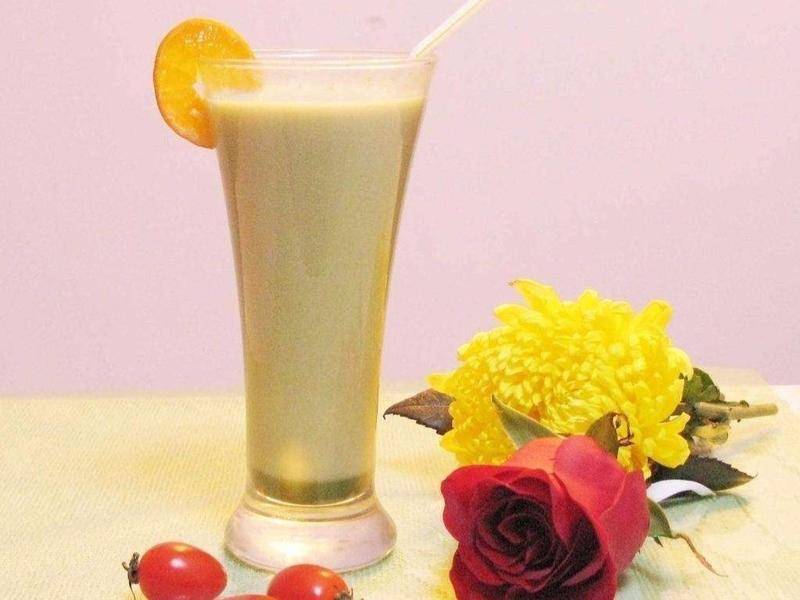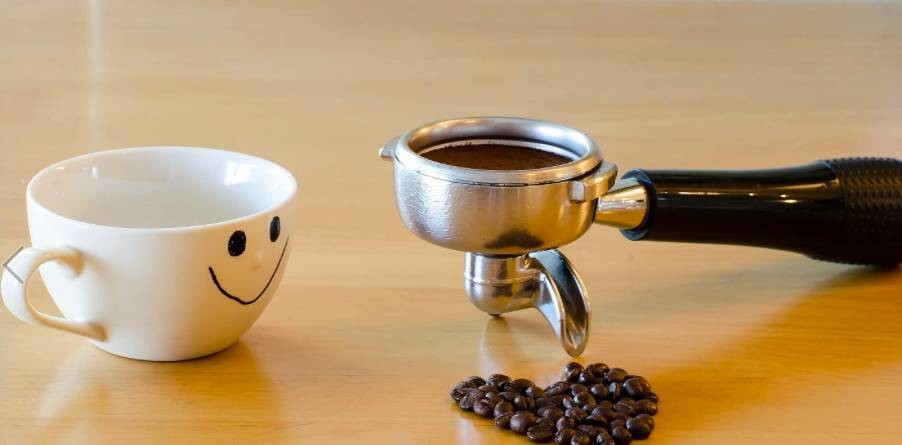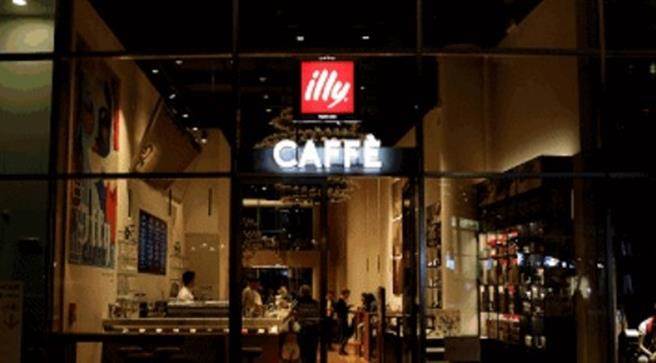From a technical point of view, is there an opportunity for milk tea to replace coffee?

For professional baristas, please follow the coffee workshop (Wechat official account cafe_style)
Tiger sniffing Note: Tianfeng Institute wrote an article on June 5, 2017, "A successful example of the catering industry, why Starbucks?" Xicha and Starbucks are two examples in the article. This leads to a question: can milk tea replace coffee?
Of course, the answer to this question is to start from the root cause, that is, what is the difference between milk tea and coffee from the raw material to the seller, and whether this difference can be replaced under certain circumstances. The argument of the article is very technical. The original title was "is there a chance for milk tea to replace coffee?" The author is Tianfeng Trading Co., Ltd. Tiger sniffing Network is authorized to reprint.
Literally, the relationship between milk tea and tea = milk + tea. In fact, the chemical reaction between milk and tea is not limited to this. In every article discussing the Chinese tea and beverage industry, it is always compared with the overseas coffee industry, but the author believes that there are several important differences between handmade tea and freshly ground coffee, so that at present, tea is still difficult to have the ability of standardized reproduction, while milk tea has made a great improvement in standardization compared with tea, but there is still a big gap compared with coffee:
1. Raw materials: the standardization of tea is lower than that of coffee beans
Tea has a long history, originated in the Shennong era 5000 years ago, began to be commercialized in the Western Han Dynasty about 2000 years ago, brewed tea in the Tang Dynasty, ordered tea in the Song Dynasty, brewed tea in the Ming Dynasty, and Chinese tea in the Qing Dynasty became popular all over the world. Coffee has a history of only more than 1000 years, which is much shorter than tea, so why is coffee the first beverage and the second export in the world (after oil)?
At present, the most active coffee bean futures trading in the world include: type C coffee beans traded on the New York Coffee, Sugar and Cocoa Exchange (CSCE) (delivery marks include Arabica coffee beans from 19 countries), and U-shaped coffee beans traded on the London Mercantile Exchange (LCE) Robusta.
Take Type C coffee beans as an example, coffee beans from 19 countries are priced uniformly in futures trading, and actual delivery varies according to the country of origin, such as Colombian coffee beans + 2 cents per pound and Ethiopian coffee beans-6 cents per pound. It can be seen that the global standard of coffee beans is basically unified, which also lays the foundation for the standardization of coffee drinks.
In terms of tea, there are not only black tea, green tea, white tea, oolong tea and other categories in our country, but also great differences in each category of tea according to origin, rarity, grafting system, picking time, tea stir-frying technology and so on. Therefore, there is no standardization basis for tea raw materials at present.
two。 Pricing: tea is more difficult to taste than coffee.
Due to the low degree of standardization of the tea raw materials discussed above, it is very difficult to taste tea. It is often difficult for the public to distinguish between tea and tea, making it difficult to price. Thus, when the pricing of tea drinks is high, it is difficult for consumers to form a consistent expectation or evaluation, which affects the reputation of the goods.
This is also an important aspect that the author believes that milk tea is better than tea, because the addition of highly standardized milk and sugar makes the taste of tea more mellow, and the sweetness of milk and sugar greatly reduces the demand and difficulty of tasting.
Therefore, in the use of tea, although the current blend of milk tea has been transferred from the original milk essence to fresh milk + bucket tea, it is still dominated by the use of low-cost tea to reduce the sense of existence of consumers' tea taste ability. Fruit tea is an interesting existence, which greatly reduces the difficulty of tea taste, while at the same time getting rid of the dilemma that the degree of fruit juice standardization is too high to form brand differences.
3. Use value side: the difference of demand level
The use value of coffee: 1, stimulate the central nervous system, prolong the awake time, 2, improve the metabolic rate
The use value of milk tea: 1, satisfy sweet food desire, 2, go shopping to quench thirst
The use value of online celebrity milk tea: 1, post moments, 2, post moments, 3, post moments
We always talk about the upgrading of human demand attributes to the top of the pyramid along the Maslow demand level. However, it is worth warning that if there is an obvious contradiction between different levels of demand for a commodity, it may be difficult to build a moat. From the perspective of coffee, it meets both safety needs and emotional needs; from the perspective of milk tea, the unhealthy food attribute of milk tea does not meet the health needs of current consumption upgrading, that is, it violates the safety needs of the second level. then the dazzling attribute of its moments is that it meets the emotional needs of the third level.
When there is a contradiction between the two levels of needs, what we need to think about is its substitutability, if once its emotional needs attribute is replaced by other goods, then it may be abandoned.
4. Consumption frequency: how to become an addict
In our report yesterday, we pointed out that from the perspective of the moat, the value of the company depends on: 1, the amount of value it creates at present, and 2, its ability to continue to create value for a long time to come. Therefore, in the long run, the consumption frequency of consumers will determine the company's ability to create value in a longer period of time in the future.
Back to coffee and milk tea, coffee consumers have experienced a long period of time from instant dissolving to current grinding, and in this process is accompanied by the cultivation of brands to the market. therefore, in the field of instant coffee, the monopoly cognition of "instant coffee = Nestle", "capsule coffee = Nestle" and "freshly ground coffee = Starbucks" is basically formed. This led to the formation of Starbucks as an addiction in the process of making coffee an addiction.
The author believes that becoming an addict requires several characteristics: 1, natural taste preference-sweet; 2, natural stimulant-caffeine, 3, basic emotion or scene giving. The preference for sweetness begins in infancy, and the yearning of cells for sweetness is irresistible to almost anyone. Caffeine, an alkaloid that stimulates nerves, is also naturally addictive.
Coffee has the advantage that tea does not have in the first two aspects, while milk tea makes up for this defect to a great extent. The difference may lie in the third level, which is more dependent on the market nurturing behavior of brands.
With regard to emotional needs, Starbucks gives coffee emotion and scene needs is the "third space", in the third space leisure, freedom, can talk about work, can be leisure. The emotion that Coca-Cola gives to Coca-Cola is "happy and cool", while the emotional need given by online celebrity milk tea is to show off.
We cannot say that showing off emotions is not as good as happiness, pleasure or the freedom of the third space, especially in the context of the economy is still upward, but if one day the economy goes down, in the lost 10 years, 20 years or more, the first emotion that consumers are likely to give up is freedom? Is it happiness? Or show off in the sun? This is a question worthy of our consideration.
Summary:
But there is no doubt that milk tea is probably the most likely drink besides coffee and cola to become an addict. Maybe what we lack is more consumer cultivation, for example, how to make it have more positive health factors, how to give it more emotional attributes, like happiness in cola, the third space in coffee. Perhaps what we lack is a good brand to develop products that meet these characteristics, so as to complete market cultivation.
* the article is an independent opinion of the author and does not represent the position of Tiger sniffing Network.
This article is published by Tiger sniffing Network authorized by Tianfeng Research Institute and edited by Tiger sniffing Network. The reprint of this article is subject to the consent of the author, and please attach the source (Tiger sniffing Network) and a link to this page. Original text link https://www.huxiu.com/article/198557.html
Important Notice :
前街咖啡 FrontStreet Coffee has moved to new addredd:
FrontStreet Coffee Address: 315,Donghua East Road,GuangZhou
Tel:020 38364473
- Prev

Coffee rivers and lakes and the culture of "kicking the restaurant"
-1-if you are browsing the circle of friends these days, the hottest topic is the fight between Xu Xiaodong and Lei Lei. There is a lot of news that MMA madman Xu Xiaodong is fighting against the leaders of all the major schools of traditional Chinese martial arts. Lei Gong, who claims to be the founder of Lei Gong Taiji, was knocked to the ground by Xu Xiaodong in less than 20 seconds. The video has gone viral on various social platforms. About this incident.
- Next

Illy joins Starbucks with a new competitor
For professional baristas, please pay attention to the current Chinese market for coffee workshops (Wechat official account cafe_style). Although coffee consumption is still not popular enough, it has created the fastest growth in the world. So the market wind also changes, although it is not easy to make a profit, the shop closure rate is not low and other practical problems, but still can not stop the enthusiasm of the players. The hot and dry market is closer to consumers.
Related
- What brand of black coffee is the most authentic and delicious? what are the characteristics of the flavor of the authentic Rose Summer Black Coffee?
- Introduction to the principle and characteristics of the correct use of mocha pot A detailed course of mocha pot brewing coffee is described in five steps.
- Which is better, decaf or regular coffee? how is decaf made?
- How much is a bag of four cat coffee?
- How about four Cat Coffee or Nestle Coffee? why is it a cheap scam?
- Which is better, Yunnan four Cats Coffee or Nestle Coffee? How about cat coffee? is it a fake scam? why is it so cheap?
- How about Cat Coffee? what grade is a hoax? which instant coffee tastes better, four Cat Coffee, Nestle Coffee or G7 coffee?
- Process flow chart of coffee making-Starbucks coffee making process what coffee tastes good at Starbucks
- The top ten best coffee beans in the world Rose summer coffee or Tanzanian coffee tastes good
- Yunnan four cat coffee is good to drink?_four cat coffee is a big brand? four cat blue mountain coffee is fake?

